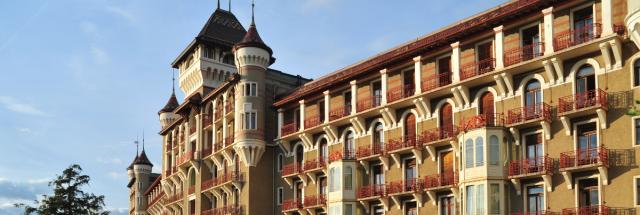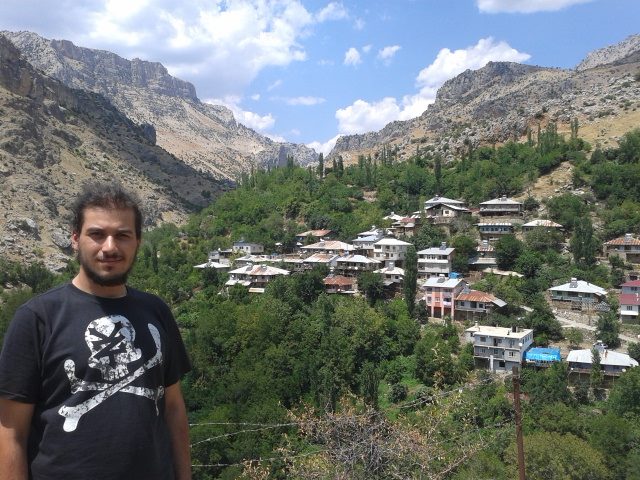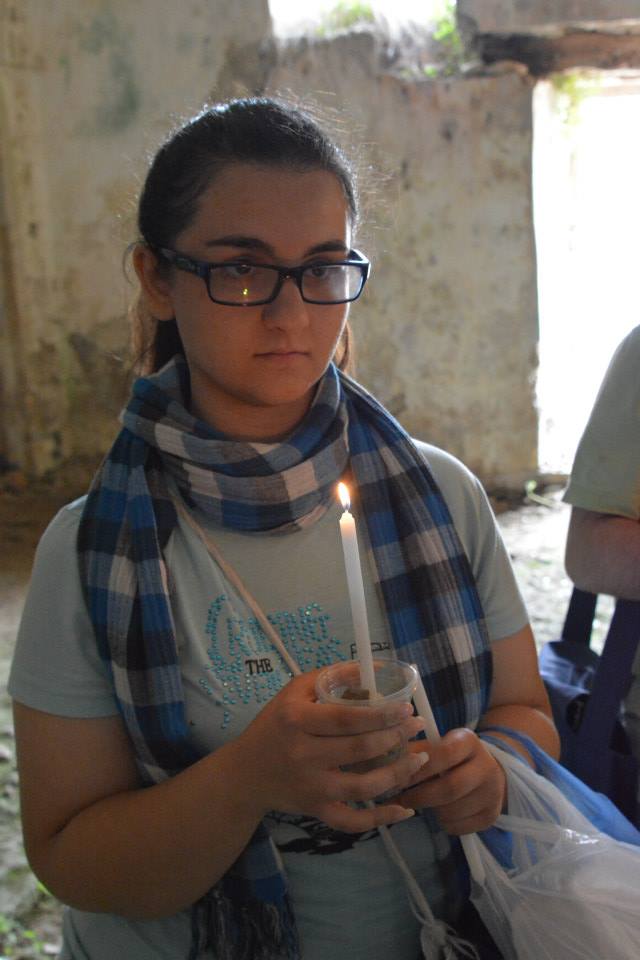İsviçre’de Türk Kürt Ermeni diyaloğu


12-18 Temmuz’da İsviçre’nin Caux kasabasında Ermeni, Kürt ve Türk katılımcılar bir araya gelerek Ermeni soykırımını, ortak geçmişlerini, mevcut durumu ve uzlaşma yollarını konuştu. “Initiative of Change” (Değişim Girişimi) adlı sivil toplum kuruluşu, her yıl yaz döneminde sekiz konferanslık bir dizi düzenliyor. Dünyanın farklı ülkelerinden gelen yüzlerce insan, bu konferanslar sırasında kendi deneyimlerini paylaşırken, daha iyi bir gelecek yaratmak için yapılması gerekenleri tartışıyor. Katılımcıların ortak yönüyse herkesin, geçmişte yaşanmış olan veya halen yaşanan çatışmalardan etkilenmiş bir hayat hikâyesinin olması. Beş gün süren oturumlarda katılımcılar hayatlarını günümüze kadar etkileyen ortak geçmiş ele alırken, ‘öteki’nin hikâyesini doğrudan dinleme ve ilk elden öğrenme imkânı buldu.
‘İnsan Güvenliği için Adil Yönetim’ başlıklı konferans kapsamında oluşan Türk-Ermeni-Kürt diyalog grubu, diğer ülkelerden gelen katılımcılar tarafından büyük ilgi gördü. Programa Ermenistan’dan, Türkiye’den, Lübnan’dan, İspanya’dan, Hollanda’dan gelen Ermeniler, Kürtler ve Türkler katıldı. Yapılan her oturumda geçmişte yaşanan sorunlar birlikte tartışıldı.
Lübnanlı Ermenilerin hepsi soykırımdan kurtulanların torunlarıydı. Aile büyüklerinden duydukları hikâyeler bir zamanlar Ermenilerin, şimdi ise yoğunluklu olarak Kürtlerin yaşadığı şehirlerle ilgiliydi. Bu diyalog projesi kapsamında, ailelerinin göç hikâyelerini ve soykırımla ilgili duyduklarını anlattılar. Musa Dağı’ndan (Samandağ), Zeytun’dan (şimdiki Süleymanlı), Urfa’dan kurtulup Lübnan’da hayat kuranların torunları olan Nejteh, Christine ve Nora, geçen yıl Musa Dağı’na bir yolculuk düzenlemişler. Üçü için de bu ziyaret, atalarının topraklarına ilk gidişleri olmuş. Nejteh ilk defa Zeytun’u görmüş, Christine ise atalarının hayatta kalmak için yaklaşık 50 gün boyunca direndiği Musa Dağı’na tırmanmış.
‘Asıl evim neresi’ 
Nejteh geziye başladıkları zaman bu kadar etkileneceğini düşünmediğini aktarıyor: “Oraları görmemiştim, Zeytun’u sadece anlatılanlardan biliyordum. İlk olarak Mersin’e gittik, oradan Adıyaman’a geçtik, sonra Nemrut Dağı’nda gün doğumunu karşıladık. Zeytun’a doğru yol alırken yüksek dağlar gözükmeye başladı ve bu tür şeylere çok inanmasam da sanki toprağın benimle konuşarak beni karşıladığını hissettim. İnsan şaşırıyor. Asıl evim neresi? Burç Hamud mu? Ermenistan mı? Yoksa atalarımın toprakları mı? Ermenistan’a hiç gitmedim ve Zeytun’da hissettiklerimi orada da hisseder miyim, bunu merak ediyorum. Zeytun’a varınca tarih kitaplarından öğrendiklerim gerçekliğe dönüştü. Dağlarla çevrilmiş, ulaşılması zor küçük bir kasaba. Bu kasabanın, zamanında ailemin yaşadığı yer olduğunu düşününce çok duygulandım. Köprü var orada. Acaba benim akrabalarım da soykırımdan kaçarken o köprüden mi geçti? Acaba bu çeşmeden su içtiler mi? Acaba hangi evde oturuyorlardı? Bu tür sorular aklımı kurcalamaya başladı.
Günümüzde Süleymanlı dediğimiz yer pek gelişmemiş, köylüsü bütün köylüler gibi samimi, misafirperver. Bir köylüyle konuşmaya başladık. Ailemden Türkçe birkaç kelime biliyordum. Ona Lübnan’dan geldiğimi, Ermeni olduğumu söyledim. ‘Atalarının topraklarına hoş geldin’ dedi. Bu sözlerden sonra ona sarılıp çocuk gibi ağlamaya başladım. Yüzümü yıkayayım diye köydeki çocuklar elimi tutup çeşmeye götürdüler. Çok ironik, aynı zamanda mahcup hisettiğim bir durumdu. Köylülerden her biri zamanında Ermenilerin orada yaşadığını biliyor; bazıları ‘Bir gün kalkıp gittiler’, diğerleri ‘Bir şey oldu, gittiler’ diyor. En tuhafıysa Almanların ve İngilizlerin aramızı bozduğu ve ondan sonra Ermenilerin gittiği hikâyesiydi. Ama bu insanları suçlamıyorum, gerçekleri kimden öğreneceklerdi ki? Duyduklarına inanıyorlar...”

'Çocuk gibi ağladım’
Türklere karşı içinde büyük sevgi barındıran ve sorunlu geçmişe rağmen Türk-Kürt-Ermeni ilişkilerinin normalleşmesi konusunda çok umutlu olan Christine de Musa Dağı gezisini anlattı: “Ailem Musa Dağı’nın Bitias köyünden. 1915 soykırımından kaçmış, sonra köye geri dönmüşler. 1939’da ise köyden tekrar kaçmak zorunda kalmışlar. Büyükannem halen hayatta ve aile hikâyelerimizi o anlatıyor. Musa Dağı’na tırmandığımızda kendimi oraya ait hissettiğimi anladım. Değişik bir şey vardı. Vakıflı’ya, günümüzde Türkiye’de varlığını sürdüren tek Ermeni köyüne gittik. Vakıflı’daki kilisede ayin yapılıyordu. Geçmişte yaşanan bütün acılardan sonra bu insanlar halen burada yaşıyor, halen dua edebiliyorlar. Kilisedeyken gözyaşlarına boğuldum, küçük bir çocuk gibi ağladım.
Köylerde insanlarla konuşuyorduk, birçoğu kendi evlerinde zamanında Ermenilerin yaşadığını biliyorlardı. Yoğunoluk köyünde Ermeni kilisesinin üstüne cami yaptıklarını gördük. Kiliseyi yıkmadan üstüne cami yapmışlar. Kutsal yer olarak kullanılmaya devam etmesi için öyle yaptıklarına inanıyorum. Acaba orada kalan Ermeni var mı, diye düşündüm. Sorduğumda Bitias köyünde Hagop isimli birinin yaşadığını öğrendim. Bitias’ta Hagop’u buldum. Eşi ve erkek çocuğu ile orada yaşıyor. Babasının soykırımdan kaçıp Mısır’a gittiği fakat oradan Bitias’a geri geldiğini anlattı. Babası ölümü göz önüne alarak dönmüş ve hayatta kalmayı başarmış. Seneye de geziye çıkarız umarım, Hagop’u tekrar görmek istiyorum.”
Ölüm tehlikesi
Christine, Musa Dağı gezisi sırasında yaşadıkları tatsız olayları anlatmayı pek sevmiyor. Fakat Nora, geziyi anlatırken çok korktuğunu söyledi. Bunu söylerken de Türk ve Kürt katılımcılara bakıyordu, söyleyip söylememek arasında kaldığı belliydi. Israr edilince Christine, olayı anlatmaya başladı. Gezi sırasında kaldıkları bir otelde yerli biriyle sohbete başlamışlar. Geziye katılan başka bir Lübnanlı Ermeni, adamla anlaşamadıkları için Christine’den çeviri için yardım istemiş. Christine olayı şöyle anlatıyor: “İkisi de milliyetçiydi. Bazı şeyleri tercüme etmek istemiyordum, kavga çıkacak diye korkuyordum. Adam milliyetçiydi, Hagop’ta da Ermeni milliyetçiliği vardı. Biraz tarihten biraz konuştular, artık ayrılırken Hagop adama: ‘Evet, atalarımın evleri burada, bir gün onları mutlaka geri alacağız’ dedi. Bunu çevirdim. Adam çok sinirlendi, bizi öldürmekle tehdit etti. Biz olay büyümesin diye kalktık odalarımıza gittik. Birkaç dakika geçmemişti, silah sesleri gelmeye başladı. Adam otelin önüne gelmiş, bizi öldürmek istiyormuş. Açıkçası ben de biraz korktum ama öldürmeyeceğini biliyordum.”
Göç hikâyeleri
Artak ise diyalog projesine İspanya’dan katılmış. Hayatını İspanya’da kuran Artak’ın kökleri Bitlis, Kars ve Muş’a dayanıyor. Arkadaşlarının Musa Dağı gezisini dinledikten sonra kendisinin hiç o toprakları ziyaret etmediğini ve açık yüreklilikle buna henüz hazır olmadığını söyledi: “Kaldıramam diye düşünüyorum.”
Konferansta göç konusuna büyük önem verilmişti. Diyalog grubunun Kürt ve Türk katılımcılarının hikâyeleri de birer göç hikâyesiydi. Hollanda’dan gelen Midyatlı Kürt Bedel’in ailesi uğradığı baskılar sonucu Midyat’ı terk edip İstanbul’a yerleşmiş. Burada da uğradıkları siyasi baskılardan kaçıp Hollanda’ya sığınmışlar. Hollanda’dan gelen Tayfun’un ailesi ise Ankaralı, onun anlattıklarına göreyse ailesi Kürtlere ve Ermenilere karşı oldukça önyargılı. Kendisi Ermeni soykırımı hakkında yüksek lisans tezini yazmış birisi, fakat tez için kaynak taraması yaptığında işe inkârcı yaklaşımdan başladığını söylüyor: “Soykırım hakkında okumaya başladım. Bir yerden sonra artık inkâr edemezdim.” Tayfun, ailesinin kendi düşüncelerine pek sıcak bakmadığını da sözlerine ekledi. Tayfun’la Bedel’in tanışma hikâyesi de oldukça ilgi çekiciydi. Hayatlarını Türkiye dışında sürdüren iki kişi bugün Hollanda’da Türk-Kürt diyalog grubu kurup bu iki halk arasındaki duvarı yıkmaya çalışıyorlar. Bu konferansın sonucunda her bir halkın kendi içinde aşması gereken farklı çatışmalar olduğunu anlıyoruz, durumun tahmin ettiğimiz kadar basit olmadığını da. Ve bu yolda daha atılması gereken çok adım olduğunu…
Otelden konferans merkezine Caux Sarayı
Katılımcıları arasında yer aldığım konferansın düzenlendiği Caux Sarayı, 1900-1902 yılları arasında inşa edilmiş, o dönemin İsviçre’nin en büyük ve en lüks oteli. Birinci Dünya Savaşı, karşısında Alp Dağları ve Cenevre Gölü’nün bulunduğu otelin ekonomik krize girmesine yol açmış. İkinci Dünya Savaşı’nın başlangıcındaysa otel kapanmış. 1944’te İsviçre hükümeti İtalya’dan kaçan savaş tutsakları için oteli tekrar açmış, Aralık ayındaysa saray bu kez Macaristan’dan göç eden Yahudi mültecileri ağırlamış.
Paramparça olmuş Avrupa’da uzlaşmanın diyalog yoluyla geleceğine inanan bir grup insan, birbirlerinden ayrılan halkları bir araya getirip konferanslar organize edebilecekleri bir yer aradıklarında, o dönemde satışa çıkarılmış Caux Sarayı bu amaç doğrultusunda yüzden fazla kişinin bağışlarıyla satın alınmış. Daha sonra yüzlerce gönüllü, büyük hasar gören binanın iç kısmını restore etmiş.
1946 yılında açılan konferans merkezinde, gönüllülük geleneği günümüze kadar devam ediyor. Caux Sarayı’ndaki ilk uzlaşma deneyimleri 1946-1950 yılları arasında Fransızlar ve Almanlar arasında başlatıldı. Sonraki yıllarda Caux, Afrika liderleri ve sömürgeci ülkelerin temsilcileri için buluşma noktası haline geldi. Zaman geçtikçe Hindistan, Japonya, ABD, Lübnan, Kamboçya, Somali, Güney Afrika da Caux’un parçası olmaya başladı, Güney Tirol’den delegasyonlar sarayı ziyaret etti. Son dönemlerde ise Irak, Suriye, Filistin, İsrail ve daha birçok ülke Caux’da diyalog arayışında olan ülkeler arasında yer alırken, Ermenistan ve Türkiye de artık bu arayışın bir parçası. Caux Sarayı’nda düzenlenen konferanslarda her yıl yüzlerce kişi hayat hikâyesini paylaşıyor. Sayılarla konuşacak olursak 2015’te %55’si kadın, %45’i erkek olmak üzere 1421 kişi konferanslara katılım gösterdi.



